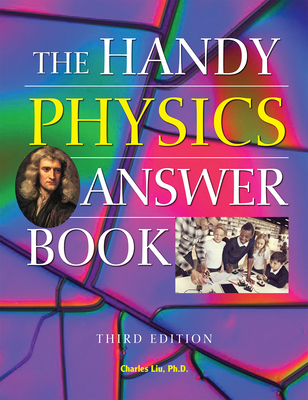
The Handy Physics Answer Book (Handy Answer Books)
Description
An informative, accessible, easy-to-use guide to physics, covering the fundamental concepts and amazing discoveries that govern our universe
We don't need a U.S. Supreme Court ruling to know that everyone is governed by the laws of physics, but what are they? How do they affect us? Why do they matter? What did Newton mean when he said, "For every action there is an equal and opposite reaction?" What is gravity? What is Bernoulli's Principle? Einstein's Theory of Relativity? How do space, time, matter, and energy all interact? How do scientific laws, theories, and hypotheses differ? Physics can often seem difficult or complex, but it's actually beautiful and fun--and it doesn't need to be hard to understand.
Revised for the first time in a decade, the completely updated third edition of The Handy Physics Answer Book makes physics and its impact on us, the world, and the universe entertaining and easy to grasp. It disposes with the dense jargon and overly-complicated explanations often associated with physics, and instead it takes an accessible, conceptual approach--never dumbing down the amazing science, yet all written in everyday English.
The Handy Physics Answer Book tackles big issues and concepts, like motion, magnetism, sound, and light, and lots of smaller topics too--like, why don't birds or squirrels on power lines get electrocuted?--and makes them enlightening and enjoyable for anyone who picks up this informative book. For everyone who has ever wondered about the sources of energy production in the United States, or how different kinds of light bulbs shine, or why wearing dark-colored clothes is warmer than light-colored ones, or even what happens when you fall into a black hole, The Handy Physics Answer Book examines more than 1,000 of the most frequently asked, most interesting, and most unusual questions about physics, including ... How can I be moving even while I'm sitting still? If the Sun suddenly disappeared, what would happen to the Sun's gravity? What is the energy efficiency of the human body? Why do golf balls have dimples? How can ice help keep plants warm? What kinds of beaches are best for surfing? What do 2G, 3G, 4G, and 5G wireless networks mean? Why shouldn't metal objects be placed in microwave ovens? Why does my voice sound different on a recording? Can a light beam be frozen in time? Why are soap bubbles sometimes so colorful? Why does a charged balloon stick to a wall? Is Earth a giant magnet? What are gamma rays? What happens when antimatter strikes matter? What is quantum teleportation? Are artificial intelligence systems able to think on their own? What happens when two black holes collide? How will the universe end?
Useful and informative, The Handy Physics Answer Book also includes a glossary of commonly used terms to cut through the jargon, a helpful bibliography, and an extensive index. Ideal for students, curious readers of all ages, and anyone reckoning with the essential questions about the universe. This handy resource is an informative primer for applications in everyday life as well as the most significant scientific theories and discoveries of our time. And, we promise, no whiteboard needed.

